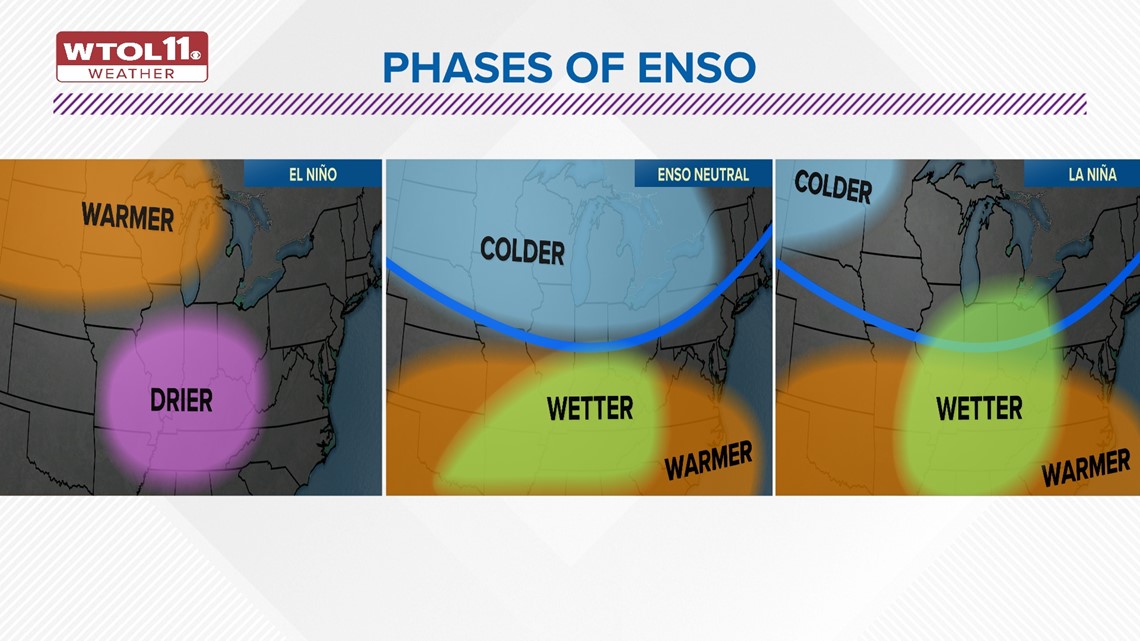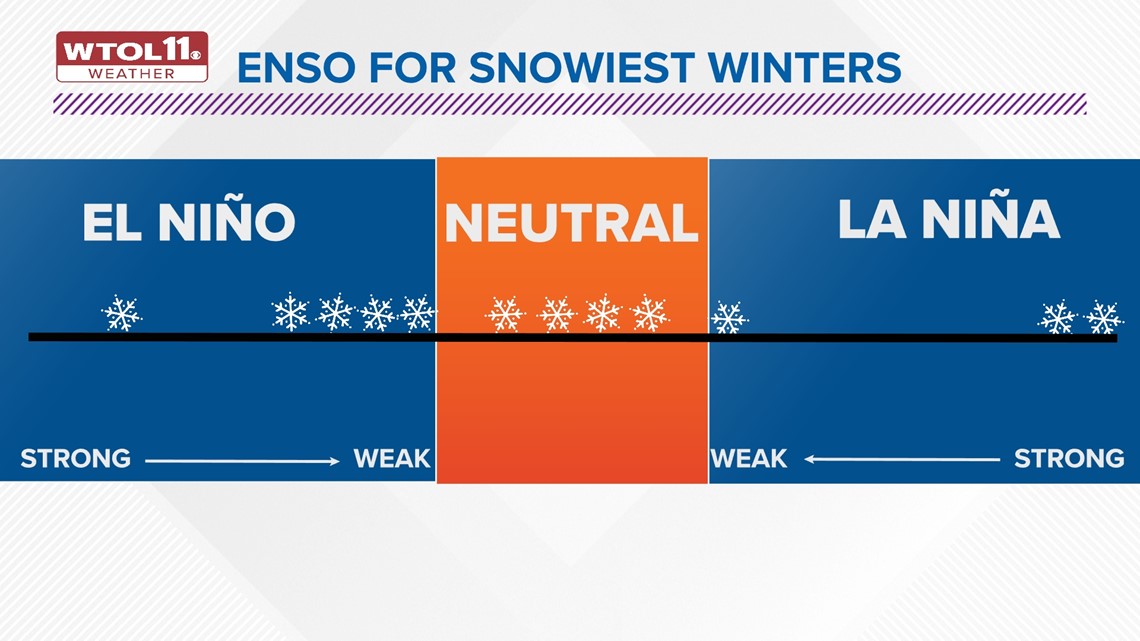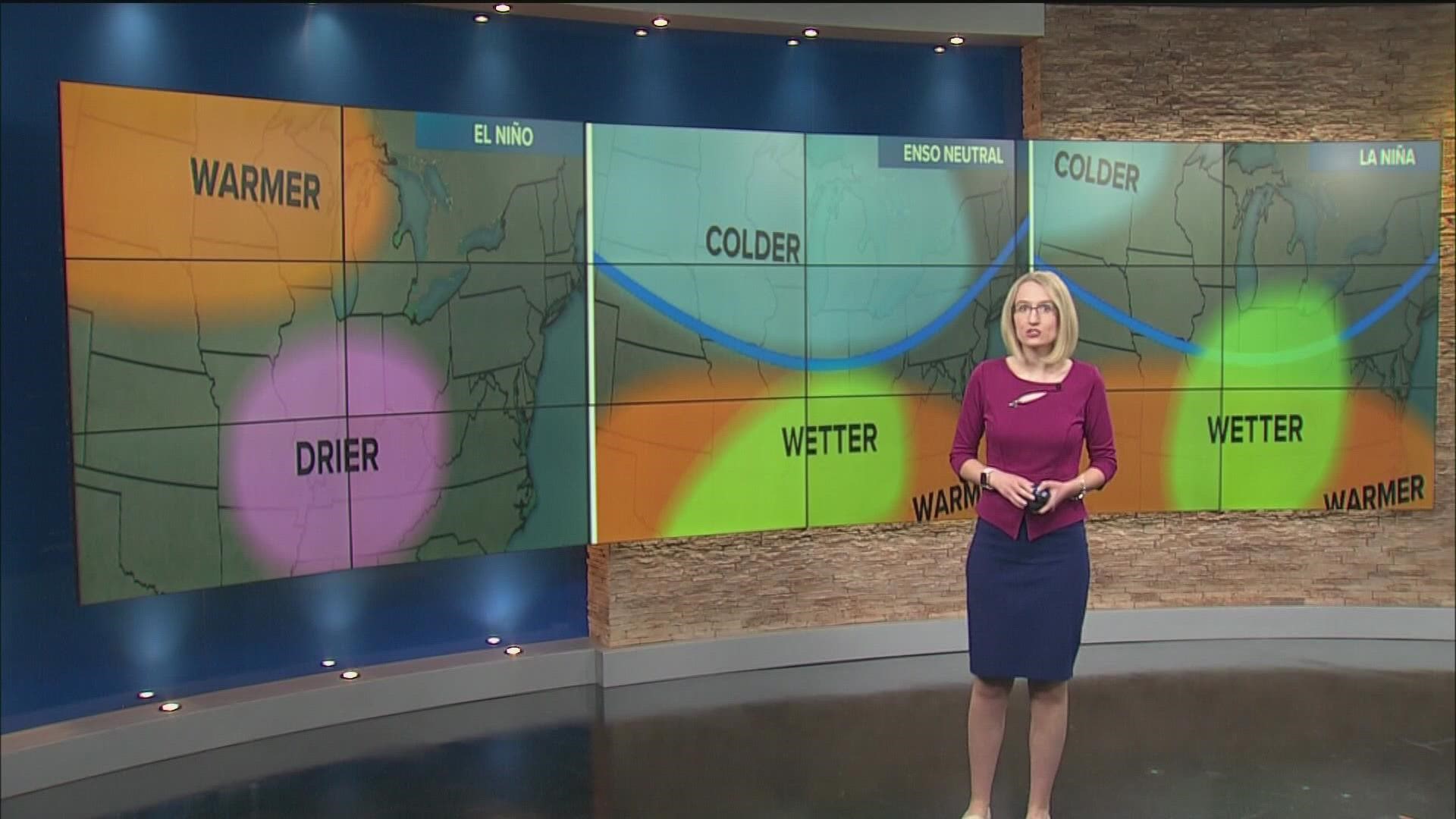TOLEDO, Ohio — Winter in northwest Ohio and southeast Michigan can include anything from snow to rain and heat to bone-chilling cold.
When the WTOL 11 Weather Team puts together a winter weather outlook, there are many factors to analyze. One significant factor is El Niño Southern Oscillation. ENSO is a measurement of the sea surface temperatures off the coast of South America.
Depending whether the waters are warm or cold, the oscillation can affect global weather patterns. ENSO also drives the jet stream over North America; Midwest winter storms travel along the jet stream.
Presently, the water temperatures are in a La Niña, and are expected to remain in that phase until the spring. This year's winter season in La Niña can be referred to as a "triple dip." This is only the third triple dip to occur in history, so it does not lend much data with which meteorologists can work.
When in a La Niña, the jet steam tends to allow for wetter conditions in the winter. El Niño winter setups tend to be more mild and drier. There is also a middle ground of ENSO, which is called neutral. In a neutral phase, northwest Ohio and southeast Michigan align for colder conditions.


This year, water temperatures are in "moderate" La Niña range. Does that mean we are destined for a lot of snow? Looking back at the snowiest winter in the Toledo area, none occurred during a moderate La Niña.
Data also showed that 75% of the snowiest winters happened in either a neutral phase or a weak phase of El Niño and La Niña.


Overall, data does not support for excessive amounts of snow during a moderate La Niña. As always, the WTOL 11 Weather team will be looking ahead for the next weather system carrying rain or snow.
MORE WEATHER CONTENT FROM WTOL 11

